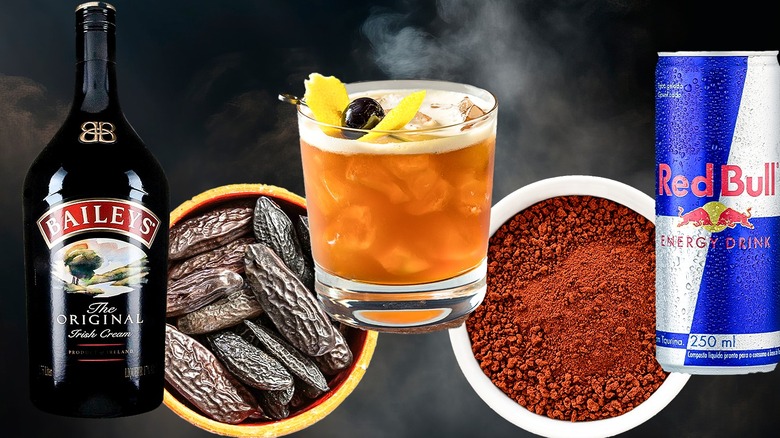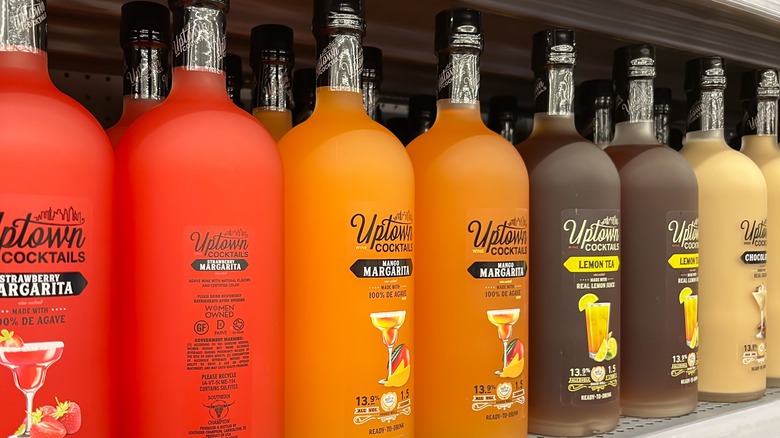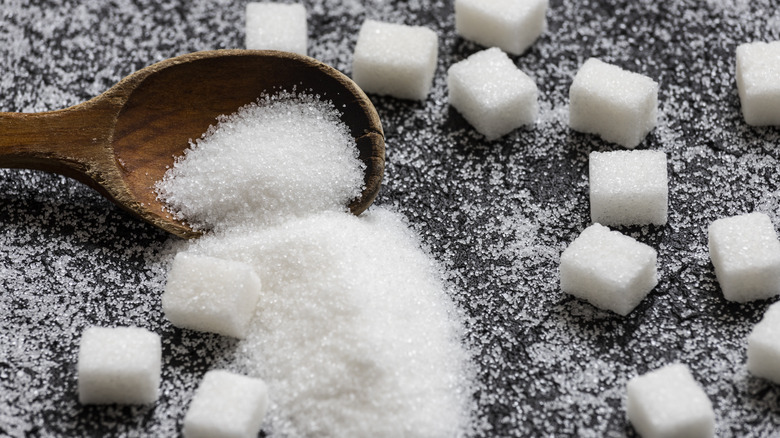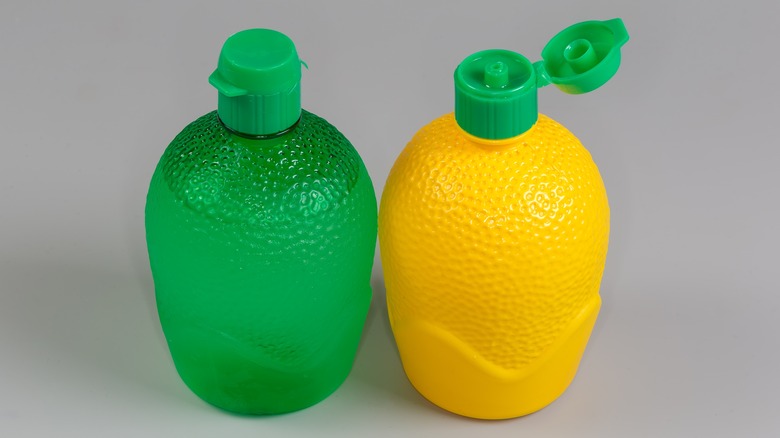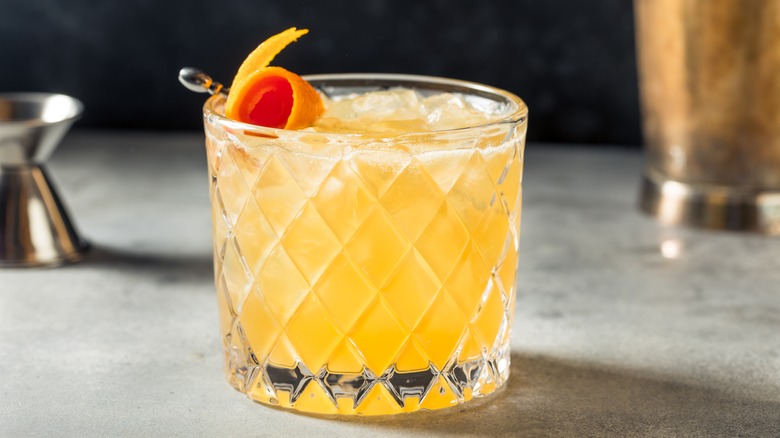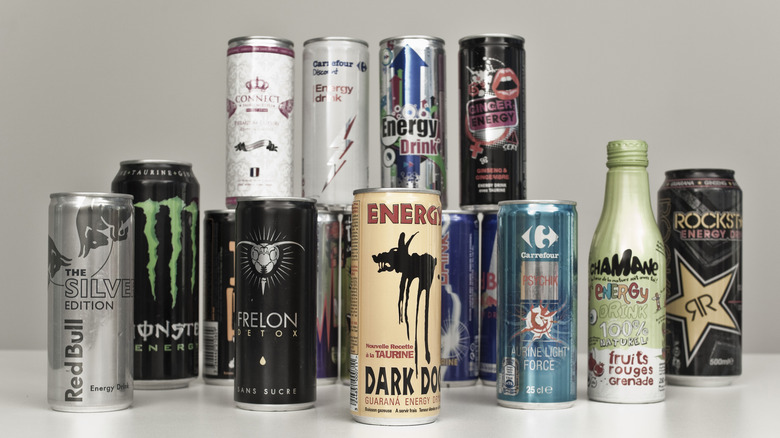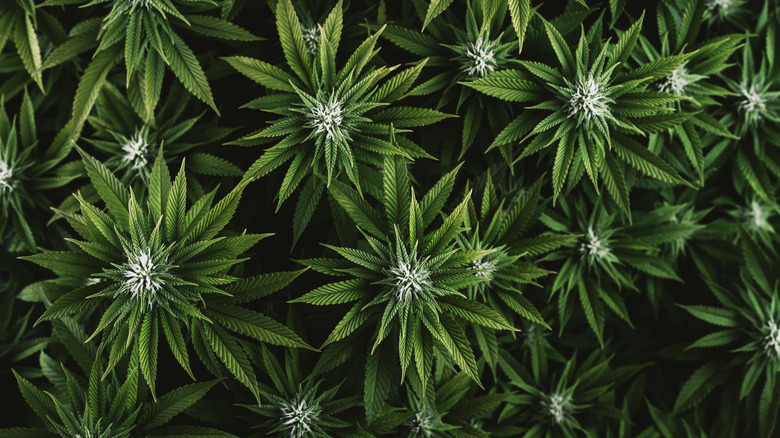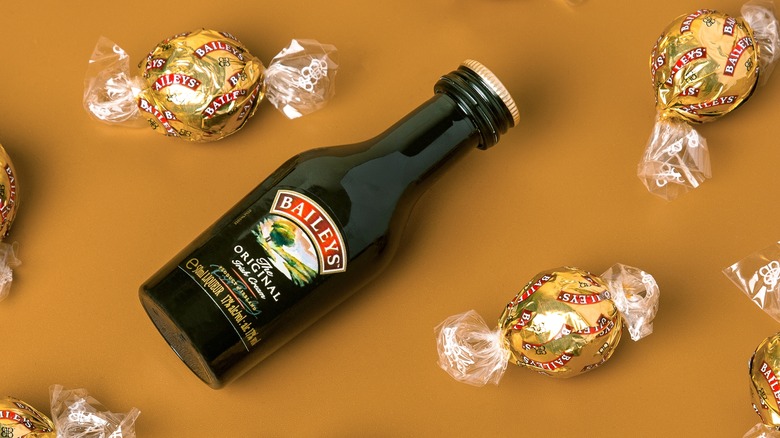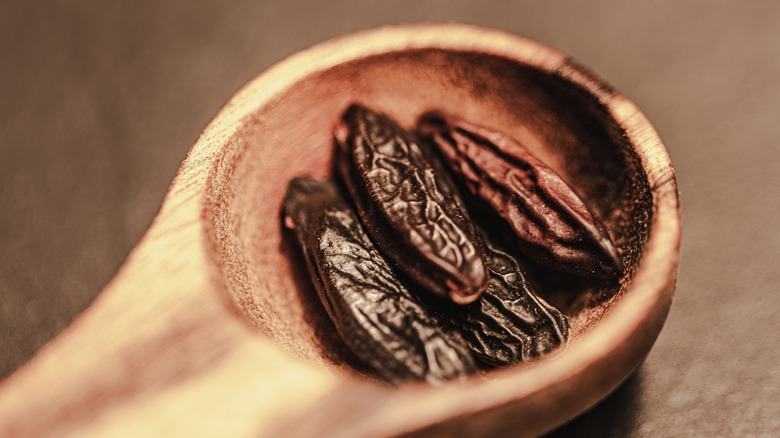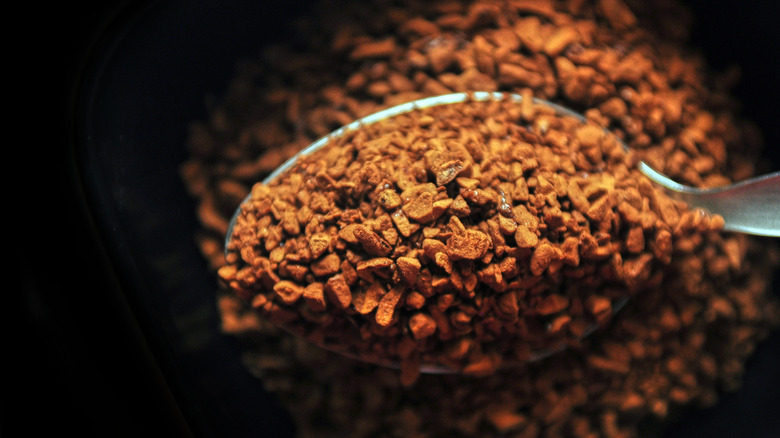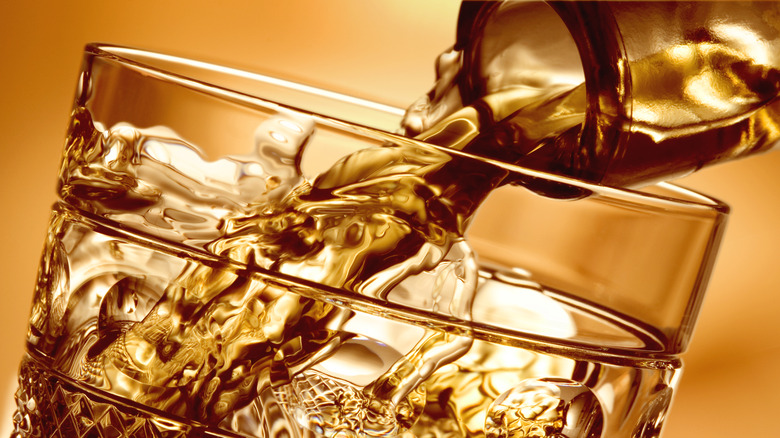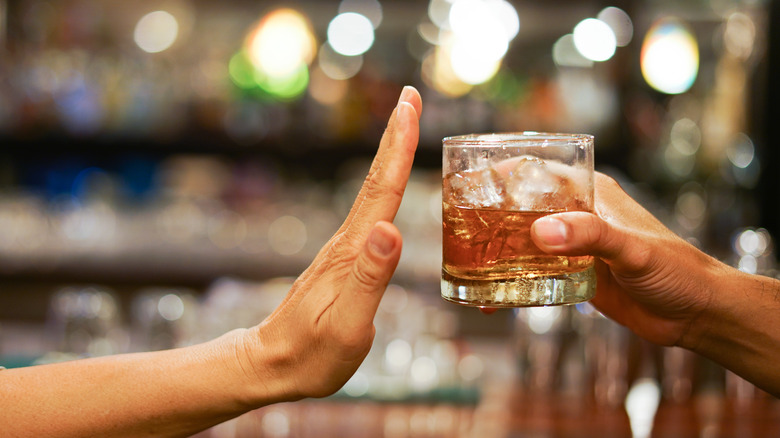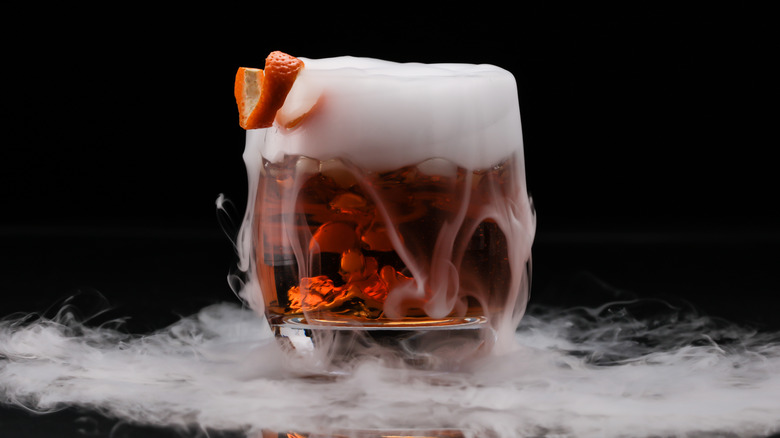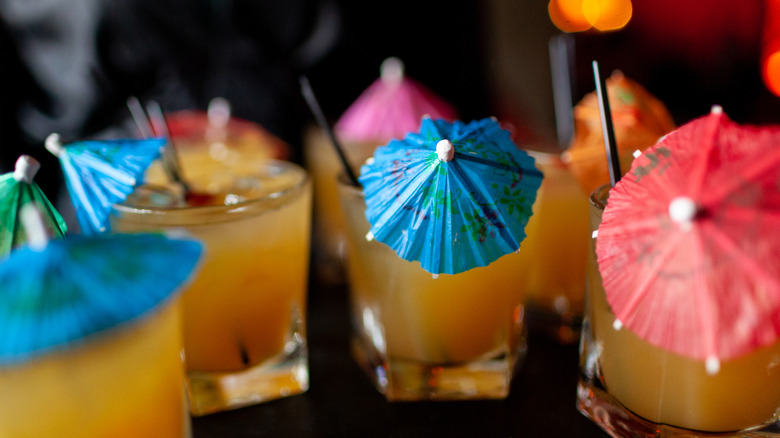13 Ingredients You Should Stop Adding To Your Cocktails
Over the course of an extensive bartending career, I've had the opportunity to study fine wines, sample rare spirits, and take a deep dive into craft beer, but it's cocktails that have always had my heart. As much as I thrive off the mental and physical challenges of producing complex drinks under pressure, the true appeal lies in the limitless opportunities for creativity. Like cooking, making cocktails leaves so much room for experimentation — the chance to tweak or change ingredients and craft something truly delicious. However, for every great cocktail I've made, there's one that didn't make the cut, and it almost always came down to the ingredients.
In my experience, whether you're following a classic recipe or creating your own, choosing the right ingredients is far more important than mastering any specific technique. Not only does the quality of each component translate to the final product but the wrong ingredient can also alter the balance of a cocktail, sometimes irrevocably. Despite this, the bartending world is full of persistent ingredients that should be avoided. Often, these ingredients sacrifice quality for convenience, but there's no time-saver like good preparation. Some ingredients aren't ineffective, but they come with health risks that just aren't worth the price of a cocktail. There are also fantastic ingredients that are victims of their own success and overused to the point that they're no longer inventive or interesting — such as elderflower liqueur. Today, I'm calling out the worst of the bunch.
Cocktail mix
Cocktail mixes aren't exactly a new invention – I can't remember a time when you couldn't buy a fluorescent green bottle of "just add your own tequila" margarita juice. However, a combination of soaring prices and lockdown habits has driven more and more people toward the idea of making cocktails at home.
With this trend has come an explosion of new brands and varieties of cocktail mixes, and most of them leave me asking "Why?" I appreciate that not everyone has the cash to stock a home cocktail bar, but do you really need a mixer to make an old fashioned? More often than not, the ingredients in these mixes aren't particularly expensive on their own. Plus, making cocktails from scratch will give you the skills and experience necessary for becoming a competent mixologist who has greater control over the taste of their drinks.
Cocktails are all about being able to balance different flavors like sweetness, bitterness, and tartness. By lumping all of those aspects into a single ingredient, you have much less control over how your drink will taste. That's not forgetting that most mixes will contain additives to make the product shelf-stable which can also affect the flavor.
White granulated sugar
Despite what some purists may say, in my experience, I've yet to find a cocktail where granulated sugar is more effective than a homemade simple syrup. I'll admit, I still use cubes if I'm making an old fashioned in a professional setting, but it's purely bartending theater.
Simple syrup is just a 1:1 mixture of sugar and water used for sweetening cocktails. It's easy to measure out precise quantities with a jigger and you don't have to worry about making sure the sugar dissolves. That's already been taken care of, so you avoid the risk of undissolved granules sticking in a lump at the bottom of the cocktail glass.
I also take issue with the use of white sugar, even in a simple syrup. Why use the most flavorless variety when there are so many types of sugars to choose from? Light brown sugar will add a subtle depth of flavor that even improves delicate cocktails, like mojitos, without overpowering the ingredients. For richer cocktails, I go even darker, opting for sugars like demerara. The best part is that the recipe for making simple syrup with dark sugar doesn't change — a 1:1 sugar-to-water ratio will always do the trick.
Store-bought citrus juice
Like with cocktail mixes, I can understand why people opt for store-bought lemon or lime juice when making cocktails. It saves time — I'd argue not as much as you might think — and seasonality can make fruit expensive or hard to obtain. However, after years of using both, there's just no substitute for the real thing.
Pre-bottled juice simply lacks the flavor and brightness of freshly squeezed fruit, and it's noticeable in the final drink. There's also a lack of consistency between brands. I typically find that juice from the store tastes too synthetic, probably thanks to the artificial ingredients used to keep it stable. There's also the fact that lots of brands add extra sugar, usually to hide the off-flavors, which will throw off the balance of your cocktails.
Fresh fruit makes all the difference, and a basic hand juicer is all you need to squeeze as you go. If you're making a lot of cocktails in one go, you can also produce larger batches of the juice in advance. Just refrigerate the juice in a sealed glass bottle and it'll last up to three days without a noticeable drop in quality.
Sour mix
I know this might sound a tad pretentious, but if I order a whiskey sour at a bar and the bartender reaches for the sour mix, I'm going to start making judgments. In essence, sour mix is just lemon or lime juice — sometimes a combination of the two — and sugar.
My main issues with sour mix are the similar to others — fresher is better, and I like having control over the different flavors in my cocktails. It's impossible to adequately tweak the sweet and sour aspects if they come as a combined ingredient. I also believe that the best part of a sour cocktail is the light and frothy texture that comes from shaking it with egg white.
Some sour mixes contain egg albumen, but I feel better knowing it came straight from an egg without any hard-to-pronounce preservatives thrown in. It's not like egg is the only option for achieving a beautifully frothy texture either. Plant-based aquafaba is a great alternative for sour cocktails — it's just the fancy name for the liquid you get with canned chickpeas. It has a neutral flavor and shakes up into a perfect foam.
Energy drinks
I count myself lucky that I'm yet to encounter a cocktail containing Red Bull — although I'm certain they exist — but energy drinks come in countless flavors these days. Some of them might even taste okay in a cocktail. Aside from the fact that I struggle to believe an energy drink will ever be the best ingredient for the job, it's the caffeine that puts me off.
Caffeine and alcohol are both drugs — one, a stimulant; the other, a depressant. The main concern around combining the two is that caffeine doesn't reduce the effects of alcohol, but it can mask them. This can lead to overconsumption, which is why the FDA reviewed and banned alcoholic energy drinks after a spate of hospitalizations in the late 2000s. I'll concede that there are already caffeinated cocktails out there, after all, we consider Irish coffees and espresso martinis to be among the classics nowadays. However, at the time of the ban, there wasn't evidence of these cocktails being linked to the same issues.
It's also fair to say that you know where you stand with these drinks, as a single, one-ounce espresso shot contains around 60 milligrams of caffeine. The caffeine content in energy drinks can vary massively, so it's harder to gauge your intake if they're being mixed into cocktails.
Cannabis
With more parts of the world relaxing the legal status of cannabis and its derivatives, it's no surprise that it's beginning to show up as a cocktail ingredient. Regardless of your stance on the stuff, it's not something I want to see in a drink.
For starters, marijuana isn't something I can see working as a flavoring. There's a reason that people who choose to consume the drug orally make brownies or gummies — so they don't have to taste it. However, that's not the main issue, as it seems that many cocktails that contain cannabis utilize tasteless THC or CBD tinctures to employ the plant's chemical properties. The problem is that, like with caffeine, these cocktails combine two drugs.
In this case, both are depressants, and consuming the two together can intensify their effects. Aside from the short-term impact, there are also studies that show combining the two can lead to a higher risk of dependence and long-term cognitive decline. If you do want to experience the effects of cannabis in a drink — and it's legal for you to do so — you're better off trying a cannabis seltzer instead, as these don't contain alcohol, and the quantities of the chemicals within should be clear on the label.
Baileys
Let me start by saying that I have absolutely nothing against using Irish cream liqueur in cocktails. It can be the perfect ingredient for adding a rich creamy flavor and luxurious texture to a drink, and I'm partial to enjoying it on its own too. My problem is specifically with bartenders always reaching for a bottle of Baileys.
I don't really have an issue with Baileys, either. It's just that Baileys has become almost synonymous with Irish cream liqueur, and it's not often you see people using alternatives. It's a shame because there are so many superb Irish cream liqueurs out there that don't have the popularity or — let's face it — the marketing budget that Baileys does.
I think many folks also assume that if you've tried one Irish cream liqueur, you've tried them all, and nothing could be further from the truth. There's a huge amount of variation between brands — some are more whiskey-forward, others more chocolatey, and some even use honey as a natural sweetener. My point is that there are recipes where Baileys isn't the best ingredient for the job, and you're missing out by not experimenting with other brands in the category.
Tonka beans
I first noticed the tonka bean trend around the mid-2010s, with the mysterious seeds popping up more and more frequently on cocktail and dessert menus alike. I can see why they became so popular too, boasting a complex flavor profile containing an aromatic combination of vanilla, almonds, and an array of baking spice notes.
My first objection to the use of tonka beans is simply that I feel that they became too "trendy." When you work in the industry, you start to get tired of seeing the same stuff being used everywhere you go. I admit that it's not the strongest argument but I felt vindicated when I learned a little more about tonka beans. I was living in New Zealand when I noticed them becoming popular, so I didn't realize that they'd been banned in the United States by the FDA since the 1950s.
It turns out that the main compound in tonka beans, coumarin, can cause fatal liver failure in high quantities. Admittedly, it's unlikely that any cocktail will contain enough coumarin to kill you, but would you take the risk? Some U.S.-based chefs and bartenders still ignore the ban, and while I might look the other way in a country where tonka beans are legally available, I find it hard to trust a business that's willing to openly flout health regulations.
Instant coffee
Even putting aside the beloved espresso martini and Irish coffee, there are plenty of delicious coffee-based cocktails that are well worth trying. Despite its bold flavor, coffee can be a superb cocktail ingredient that improves both the taste and texture of a drink. However, there's simply no substitute for fresh espresso or cold brew made from real coffee beans.
Again, I understand why people use instant coffee in a pinch. It's cheap and doesn't require any specialist knowledge or equipment to use but it's not going to make for a tasty cocktail. Coffee beans come in two main varieties — Arabica and Robusta. Instant coffee is typically made with the latter, which contain more caffeine but are cheaper and taste very bitter. Arabica beans contain more sugar and fat but produce a much smoother-tasting coffee with more nuanced and enjoyable flavors.
Using real coffee also means you benefit from the crema. This is the name for the creamy layer that forms when you pour an espresso shot, caused by the hot water emulsifying the beans' natural oils. The crema enhances the aroma, flavor, and texture of the coffee and, subsequently, your cocktail. Some instant coffees are formulated to produce a crema but it's incomparable to the real thing.
High-end spirits
I'll forever be a proponent of using high-quality components in cocktails. You wouldn't expect to eat a masterpiece of a meal made with poor ingredients, and the same goes for mixed drinks. However, with premium spirits, there comes a point of diminishing returns.
Consider the reasons a spirit might be considered high-end. For starters, some brands are expensive purely because an eye-watering price tag implies exclusivity. It's a marketing strategy and spending the extra money won't make any difference to your drink. Other liquors are expensive because they're rare which, again, won't make your cocktail taste any better. Some spirits truly deserve their higher price point but it's their nuanced flavors that make them special. Maybe there's some barrel character from extended aging that you don't find in younger spirits, or something unique about the ingredients used to make the distillate.
The problem with most of these is that those nuances are going to be lost once you introduce other ingredients. Unless you're making a spirit-forward cocktail like a martini or an old fashioned, few people will notice the difference. You're better off picking a spirit based on how well it works with the other components, or one that's considered a typified example of the style.
Low-quality spirits
Despite everything I just said about using high-end spirits in cocktails, it's worth acknowledging that there's another side to that coin. While a premium spirit might be wasted in a cocktail, it's unlikely to make it unpalatable. Low-quality liquor, on the other hand, can absolutely ruin a good drink.
The factors that make a spirit "low-quality" can vary. Sometimes it's due to inferior base ingredients, other times it's due to limited or sloppy distillation or a reduced aging time. The last two reasons can both result in a less-flavorful, harsher-tasting spirit with more pronounced ethanol notes, and it's hard to mask these kinds of faults in any cocktail.
Attempts to cover them up by adjusting the amounts of your other ingredients are just likely to throw off the balance of the drink, so it's a lose-lose situation. Note, however, that I'm calling out low-quality spirits, not cheap ones. Although budget liquor is more likely to be lower quality, it's not a given. There are plenty of spirits that are cheaper due to factors like economies of scale or local production. These can be excellent value-for-money and while there may be better options, they'll still be fine in a cocktail.
Dry ice and liquid nitrogen
If you've ever wondered how bartenders make those cocktails that smoke like something out of a science experiment, the answer is likely to be dry ice or liquid nitrogen. Personally, I've been wary of liquid nitrogen since Alan Cumming's frosty demise in James Bond's Goldeneye, but it turns out my concerns weren't invalid.
Although the two substances produce similar visual effects in cocktails, they're not the same thing. Dry ice is carbon dioxide that's been compressed from its usual gaseous state into a solid one under incredible pressure. Liquid nitrogen is nitrogen that's undergone similar processes to change it from a gas into a liquid. Both are unimaginably cold. Dry ice has a surface temperature of around -109 degrees Fahrenheit, while liquid nitrogen comes in at below -300 degrees Fahrenheit. Both are low enough to cause severe injury from skin contact.
They also affect the air around them, with dry ice evaporating into carbon dioxide, and liquid nitrogen having the ability to reduce the amount of oxygen in the air. Without special equipment, there's no way to detect these reactions, which can cause asphyxiation. Using the wrong type of container can also result in an explosive build-up of pressure. These characteristics, combined with the fact that people have experienced traumatic injuries from cocktails that use these "ingredients," are enough for me to decide that they shouldn't be in the hands of bartenders, no matter their skill or experience.
Cocktail umbrellas
I know that it doesn't technically count as an ingredient, but I'm going to take this opportunity to rant about my least favorite garnish — the cocktail umbrella. They're tacky, lazy, and do absolutely nothing to improve a cocktail.
Garnishes have a purpose, which is to enhance the aroma and flavor of a drink. Sure, they should make a drink look enticing too, but you can't tell me that a toothpick covered with garish, recycled paper is visually appealing. Some bartenders claim that cocktail umbrellas serve a purpose by shielding cold drinks from the sun but even the "King Cocktail" himself, Dale DeGroff, has written this off as a myth.
The truth is that there are countless garnishes to choose from that will actually improve a cocktail and look far more appealing. If it's the convenience you're looking for, you can always dehydrate some citrus which keeps its scent and can be kept for up to 12 months if stored properly. Even if you're making tiki cocktails — the drink style that's most often associated with cocktail umbrellas — you have plenty of options that require minimum fuss. Why not try a flourish of pineapple fronds or an eye-catching fruit fan instead?
